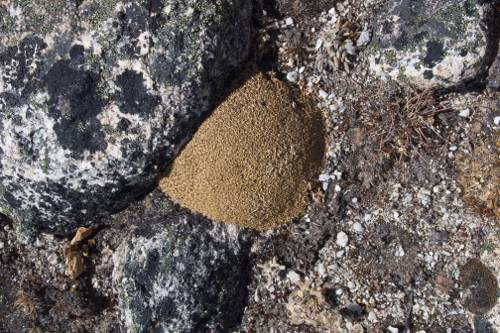
FAQ About Indoor Plant Adaptation for High Altitudes

What challenges do indoor plants face at high altitudes?
Indoor plants at high altitudes face challenges such as reduced atmospheric pressure, lower oxygen levels, and increased exposure to UV radiation. Additionally, the lower temperatures and potential for wide temperature fluctuations can stress plants. These conditions may affect their growth, water uptake, and photosynthesis efficiency.

How does reduced atmospheric pressure affect indoor plants?
Reduced atmospheric pressure at high altitudes can lead to decreased gas exchange in indoor plants, as the gradient for oxygen and carbon dioxide diffusion is lower. This can result in slower growth and affect photosynthesis. Plants may also experience increased water loss through transpiration due to drier air conditions.

What are the signs of stress in indoor plants at high altitudes?
Signs of stress in indoor plants at high altitudes can include wilting, browning leaves, slow growth, leaf drop, and increased susceptibility to pests. These symptoms can result from environmental factors like low humidity, intense sunlight, and temperature fluctuations common at high altitudes.

How can I improve humidity for indoor plants in high altitudes?
To improve humidity for indoor plants at high altitudes, you can use a humidifier, place water trays near plants, or group plants together to create a micro-humid environment. Incorporating pebble trays under pots and regular misting can also help increase ambient humidity.

What plant varieties are best suited for high altitudes?
Some plant varieties that are well-suited for high altitudes include succulents, ferns, and alpine plants, as they can adapt to lower humidity and intense sunlight. Plants such as Jade Plants, Spider Plants, and Peace Lilies are also good choices due to their resilience and adaptability.

How does UV radiation at high altitudes affect indoor plants?
At high altitudes, increased UV radiation can lead to sunburn on leaves, manifesting as brown or white patches. Prolonged exposure can damage plant tissue and reduce growth rates. Using UV-filtering films on windows or ensuring plants have some indirect light can mitigate these effects.

What watering techniques help plants adapt to high altitude conditions?
At high altitudes, it's important to adjust watering techniques to prevent overwatering or underwatering. Allow the topsoil to dry out slightly between waterings, and reduce the frequency while ensuring thorough watering to reach the roots. Monitoring the soil moisture level can help in adjusting watering schedules appropriately.

Does elevation affect the soil composition for indoor plants?
While elevation itself does not directly change soil composition, the environmental conditions at high altitudes—such as low humidity and cooler temperatures—may require a different soil mix. Consider using well-draining soil with organic material to retain moisture while preventing root rot.

How can temperature fluctuations be managed for indoor plants at high altitudes?
To manage temperature fluctuations, place plants away from drafts and direct heat sources. Using insulating window coverings or thermal curtains can help stabilize room temperatures. Additionally, consider selecting heat mats or grow lights to maintain optimal temperature ranges as needed.

What is the impact of lower oxygen levels on plant growth at high altitudes?
Lower oxygen levels can reduce respiration rates in plants, leading to slower growth and reduced energy production. This may result in weaker plants with less vigorous foliage. Choosing plant species that are more efficient in utilizing available oxygen can alleviate some of these issues.

Can artificial lighting help indoor plants at high altitudes?
Yes, artificial lighting can be beneficial for indoor plants at high altitudes, particularly during winter months or in areas with reduced natural light exposure. Full-spectrum grow lights can supplement natural light, promoting photosynthesis and healthy growth.

Are there specific fertilizers recommended for high altitude indoor plants?
Fertilizers high in phosphorus and potassium can be beneficial for high altitude indoor plants, as these nutrients support root and flower development while building stress resistance. Avoid over-fertilizing, as this can lead to nutrient burn, especially in stressed plants.

How does high altitude affect photosynthesis in indoor plants?
High altitude can affect photosynthesis through reduced carbon dioxide availability and increased light intensity. These factors can limit the plant's ability to produce energy effectively. Careful management of light and ensuring CO2 levels are sufficient can help optimize photosynthesis.

What role does acclimatization play in plant adaptation at high altitudes?
Acclimatization is crucial for plants adapting to high altitudes, allowing them to gradually adjust to environmental stresses like lower temperatures and pressure. This can involve slowly increasing light exposure, adjusting watering schedules, and altering humidity levels to help plants acclimate smoothly.

How often should indoor plants be repotted at high altitudes?
Indoor plants at high altitudes should be repotted every 12 to 18 months, or when they outgrow their containers. Repotting allows for fresh soil, which can help manage nutrient levels and ensure adequate drainage, both important under high altitude conditions.

What common misconceptions exist about growing indoor plants at high altitudes?
A common misconception is that all plants struggle equally at high altitudes. In reality, many species have adapted successfully. Another myth is that indoor environments negate altitude effects; however, light, temperature, and moisture levels must still be managed carefully.

Can air circulation impact plant health at high altitudes?
Proper air circulation is essential for indoor plant health at high altitudes, as it can prevent mold and disease by reducing excess moisture around foliage. Circulating air also supports even temperature distribution and helps maintain CO2 availability around plants.

How does nighttime temperature affect indoor plants in high altitude environments?
Nighttime temperatures can significantly impact plant health, especially at high altitudes where drops can be more extreme. Cool nights may slow growth and metabolic processes in some species. Ensuring that temperatures do not fall below minimum thresholds can support continuous healthy growth.

What are some signs that an indoor plant is thriving at high altitude?
Signs of thriving indoor plants at high altitude include vibrant, firm leaves, steady new growth, and a visibly strong root system. Consistent flowering and resistance to pests can also indicate that a plant is well-adapted to its high altitude environment.

Are there special containers recommended for indoor plants at high altitudes?
While specific containers are not necessarily required for high altitudes, using materials that enhance drainage, like terra cotta, or containers with additional insulation, can be beneficial. Self-watering pots can also help manage consistent moisture levels for plants.
